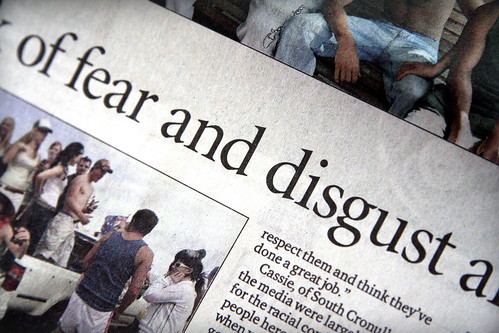
Bruce Bartlett, in an
interesting article in the Washington Times, argues that lower marginal tax rates on the very wealthy can result in them paying proportionately more taxes. For example, in the US the top tax rate has fallen from 70 per cent in 1980 to 28 per cent today. Over that time the amount of income tax paid by the top one per cent of taxpayers has risen from 19 to 34 per cent (an increase of 80 per cent). Similar scenarios are observed in other countries, with a counter-intuitive, negative relationship existing between the amount paid by the rich and the marginal rate they face. So do lower tax rates increase equality?
Some explanations for this relationship would indeed answer yes to this question. For example, a reduction in the marginal rate would lessen incentives to engage in tax evasion, which would indeed move the tax burden in the direction of the rich.
However, there must also be other explanations for this relationship since in Australia the share of income tax paid by the rich has been increasing despite marginal rates not increasing over this time period. For example, in 1996-97, the richest 5 per cent of taxpayers paid
25 per cent of income taxes. By 2002-03, this had risen to
30 per cent (a 20 per cent increase) despite these taxpayers facing a marginal rate of 47 cents over the entire period.
Also over this period inequality was worsening. There was a 30 per cent increase in the income required to join the 5 per cent 'club' (the richest Australians) but only a 14 per cent increase in the income required to miss out on joining the 5 per cent 'duds' (the poorest Australians). Presumably, this increasing inequality would explain much of the higher tax burden placed on the rich, as more of their income is earned in the higher tax brackets.
Indeed, this same effect appears to explain much of the story in America. Since 1979, the richest one per cent of Americans have had income growth of around
200 per cent. This far out ranks the growth of any other income group and probably almost wholly explains the Bartlett figures.
This does not amount to an argument against tax cuts, simply that they are probably not effective at redistributing income. But this would only concern you if you thought redistribution was a good thing. Why should the people that are producing the wealth subsidise those who aren't?
 I am late to the piece, but for what it’s worth, here are my four cents on the Cronulla riots:
I am late to the piece, but for what it’s worth, here are my four cents on the Cronulla riots:



